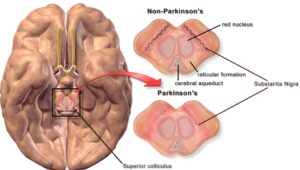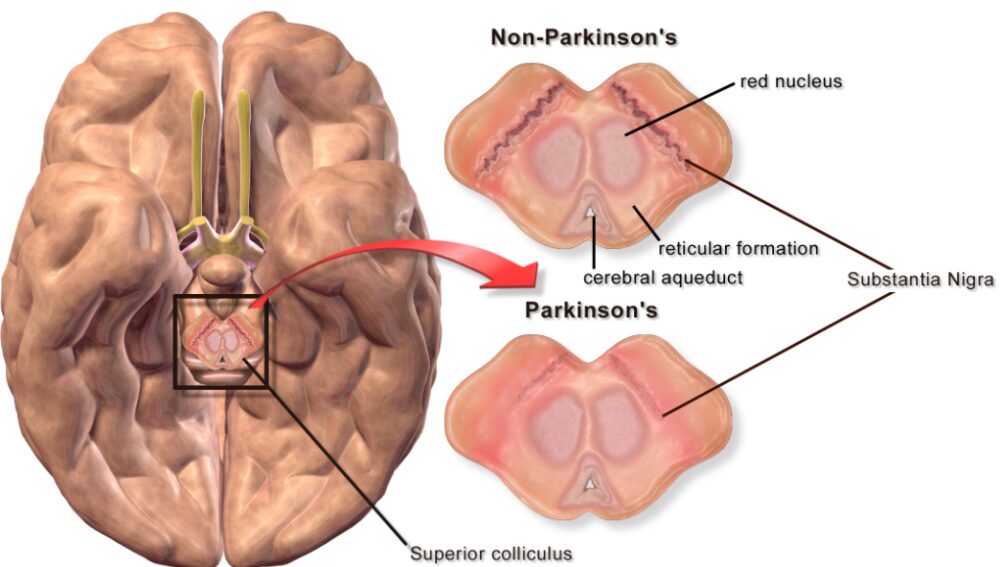Today we will tell you today is national what day. on April World Day of Parkinson’s Disease is celebrated. Parkinson’s Disease was described for the first time by James Parkinson , (1755-1824), English physician, in 1817; he described it under the name of “Paralysie agitante”.
Charcot (1825-1893), French doctor at the Salpetriere hospital, gave the definitive name to this disease: “Parkinson’s disease”.
April 11th, the anniversary of the birth of James Parkinson, has become World Parkinson’s Day since 1997, but depending on the country, the date varies somewhat. Thus in France in 2015, it is celebrated on April 09.
World Day of Parkinson’s Disease April 11
The EPDA (European Parkinson ‘s Disease Association) has chosen as emblem the tulip, created by the Dutch, red and white and called “James Parkinson”.
Day originally European, it became, in 1997, World Day.

Parkinson’s disease
Parkinson’s disease is a degenerative condition, rare before age 45, affecting 1.5% of the population over 65, which affects both men and women. The fundamental lesion is the degeneration of a certain type of neurons: dopaminergic neurons.
These neurons produce dopamine, which is a neurotransmitter of the nervous system. It intervenes in particular at the level of neurons responsible for the control of the movements of the body. There is a deficiency of dopamine in the brain during Parkinson’s disease and this is manifested by movement disorders.
Causes and risk factors
The cause of Parkinson’s disease is unknown. Very rare cases are hereditary, and in this case Parkinson’s disease occurs in very young subjects. Similarly, no risk factor is known with certainty, in particular no food or infectious factor has been recognized.
Signs of the disease
The onset of the disease is insidious: reduced activity, abnormal fatigability, poorly located pain, writing difficulties, trembling with one hand, fluctuating stiffness, etc. Gradually, the other signs of the disease will appear. These are mainly:
- Akinesia (“slow” movements)
- Akinesia is defined by scarcity, the difficulty of initiation, the slowness of movement. She particularly touches the walk: the start is difficult, sometimes stomping on the spot, then with small steps, feet “glued” to the ground, motionless arms no longer swaying, the back bent forward, the neck stiff. The start is sometimes paradoxically facilitated by the presence of an obstacle in front of the patient. Sometimes the blockage occurs after the start, the patient is then suddenly stopped, suddenly unable to move forward, feet stuck to the ground: it is the phenomenon of kinetic stopping. Akinesia is often noticed early during writing, which becomes more difficult and small (we speak of micrography). The face is also touched, with fixed features, not very expressive, a fixed gaze. Speech is rare, poorly articulated, monotonous. All gestures are rare and slow. Akinesia is therefore responsible for a loss of automatic movements, unconscious: the patient must consciously control most of his movements, even those that occur without one thinks in normal times.
- Hypertonia (stiffness)
- Hypertonia is said to be of the extrapyramidal type. It is a rigidity, a stiffness of the limbs and the axis (the spine), which is observed by mobilizing the joints of the patient, who is asked to be the most passive and the most relaxed possible. We then observe an involuntary resistance to mobilization (for example the flexion-extension of the wrist), resistance that disappears and reappears in successive jolts during the movement: it is the so-called phenomenon of the toothed wheel. This rigidity tends to fix the limbs in the position that is imposed on them.
- Tremor
- Tremor is common. It is a regular tremor, which typically appears at rest, and disappears during movement; he is sometimes present when maintaining an attitude (for example when the patient holds his arms outstretched in front of him). It disappears during sleep and increases during emotions or concentration efforts such as mental arithmetic. At the level of the hands, it evokes a crumbling movement of bread between the fingers. He can touch the face, with trembling lips or chin.
- The decrease in posture reflexes (balance disorders), which appears later than other signs.
- The decrease in posture reflexes is responsible for balance disorders. It appears most often only after several years of evolution. She is responsible for falls typically back, the patient losing the reflex to “catch up” if it is unbalanced.
- Other disorders are often associated with Parkinson’s disease:
- Pain, often with cramps or uncomfortable tingling;
- Digestive (constipation) or urinary disorders (urgencies mictionnelle);
- Orthostatic hypotension (lowering of tension when the patient gets up, responsible for vertigo or even falls);
- Sleep disorders (insomnia, drowsiness);
- Sweats, hot flashes, excessive salivation;
- Psychic disorders are quite common during illness: often depression, anxiety, sometimes irritability or persecution. Intellectual impairment is rare, and it must evoke other diagnoses (see other Parkinsonian syndromes). Visual hallucinations sometimes occur, but almost always after many years of evolution or under certain treatments, if not again there must be other diagnoses.
- NB: one of the signs frequently sought by the doctor is the inexhaustible naso-palpebral reflex: it is the reflex closing of the eyes when one (soft) hit the root of the nose. Normally, this reflex closure no longer occurs after a few percussions, while it reproduces almost indefinitely during Parkinson’s disease. (Warning: this sign is suggestive of Parkinson’s disease, but definitely does not mean that it is the case, it can even meet in people in perfect health)












